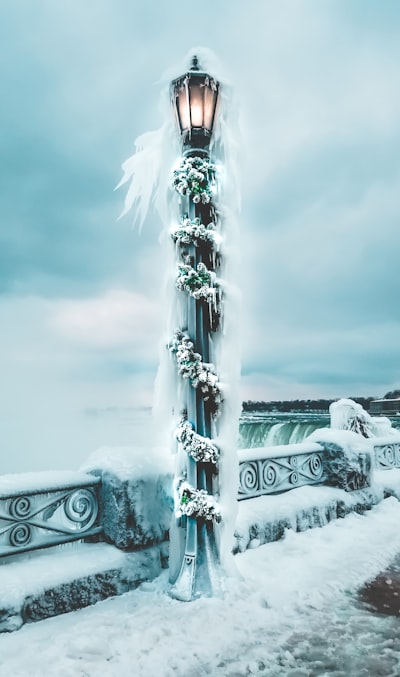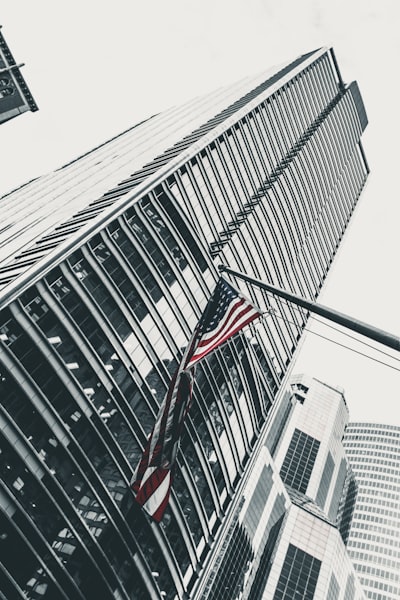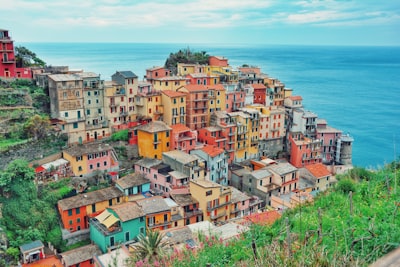Bagan is home to over 2,000 ancient Buddhist temples, pagodas, and stupas, making it one of the most impressive archaeological sites in Southeast Asia. Some of the must-see attractions include the iconic Shwezigon Pagoda, the Ananda Temple, and the Dhammayangyi Temple, which are renowned for their intricate architecture and stunning views.
Smart Travel Insights

Smart Travel Insights
Discover hidden gems and expert travel guides for your next adventure. Get inspired with curated itineraries and insider tips.
Top Destination
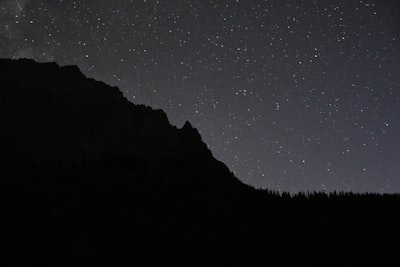 Tian Shan MountainsKyrgyzstan
Tian Shan MountainsKyrgyzstan1. Issyk-Kul Lake Issyk-Kul Lake is the second largest alpine lake in the world, second only to Lake Titicaca in South America. It is 182 kilometers long and 58 kilometers wide. It was formed by volcanic activity and heated by underground hot springs. It never freezes even in the harsh winter! The lake is deep and warm, and for centuries it has been an oasis in this desolate mountainous area. In summer, the water temperature can reach 25-28°C, which is warmer than the air temperature. Lake Issyk-Kul and its surroundings are home to a diverse flora and fauna and are considered one of the most striking attractions in Central Asia. 2. Charyn Canyon The Charyn Canyon is located 200 kilometers east of Almaty. It is located right next to the Sino-Russian border and is part of the Charyn National Park, which was established in 2004. The canyon stretches for 154 kilometers along the Charyn River in the northern part of the Tianshan Mountains. The canyon is beautiful and famous for its strange rock formations, which are quite similar to some of the great canyons in the western United States. 3. Jeti-Oguz Canyon Jet-Oguz means "Red Cliff of Seven Bulls" in Kyrgyz and is located on the northern slope of the Terskaya Alatu Mountains at an altitude of 2,250 meters. The canyon slopes are covered with the world-famous Tianshan blue spruce, forming a wonderful mountain forest that is perfect for hiking. A rushing mountain river flows parallel to the trail, and there is a magnificent waterfall called "Maiden's Tears". Imagine spending a night in a traditional yurt with red cliffs and green conifers as a background. 4. Bezeklik Thousand Buddha Caves The ancient Bezeklik Thousand Buddha Caves are located on a cliff overlooking the river valley, which is picturesque. It is located in the Chinese part of the Tianshan Mountains and can be visited on the way to and from Urumqi, which is about a three-hour drive between the two places. 5. Karkala Valley The beautiful Karkala Valley is located on the border of Kazakhstan and Kyrgyzstan. This area was once part of the Silk Road, with merchants from Kazakhstan, Kyrgyzstan and China traveling through it. Today, it is designated as the base camp for Karkhara, the starting point for expeditions to climb Victory Peak (7,439 meters) and Khan Tengri Peak (7,010 meters). It may be an ideal rest stop for those exploring the Tian Shan mountain range. Accommodation is in "walk-in" tents, equipped with hot showers, traditional saunas and bars!
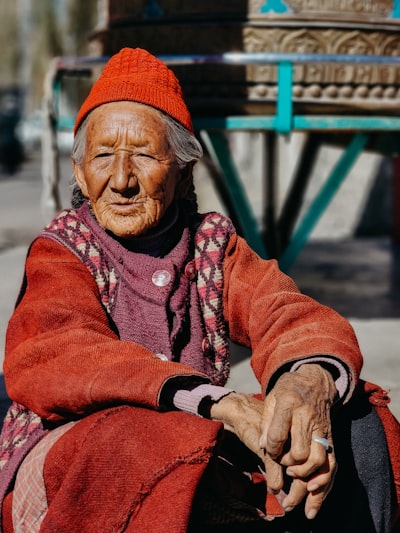 Leh LadakhIndia
Leh LadakhIndia1. Pangong Lake A breathtaking natural wonder in the Ladakh region, Pangong Lake is known for its crystal clear waters that reflect the surrounding snow-capped mountains. This high-altitude lake, which is over 4,350 meters above sea level, has a breathtaking ever-changing color from blue to green to red. Pangong Lake is a must-visit for anyone who wants to experience the beauty of northern India on their trip to Ladakh. 2. Khadon La Pass Khatung La Pass is one of the highest motorable roads in the world and is the gateway to the Nubra Valley and Shyok Valley. This pass is a paradise for thrill seekers, offering adventure enthusiasts the opportunity to experience rafting and admire majestic sand dunes. The journey through Khadon La Pass bears witness to the efforts of the Indian Army to maintain this important arterial road in Leh-Ladakh. 3. Nubra Valley Located in the high-altitude desert area, the Nubra Valley can be reached via the Khadon La Pass and is famous for its charming sand dunes and Bactrian camels. The valley is a blend of natural beauty and local culture, and the Diskit Monastery is a beacon of peace and spirituality. The valley's unique topography, fertile land, and steep mountains make it a highlight for visitors to Ladakh. 4. Leh Palace Once the residence of the royal family, the Leh Palace is an architectural wonder overlooking Leh. The nine-story palace offers panoramic views of the surrounding area and houses a rich collection of ancient scriptures and artifacts. A visit to the Leh Palace provides an insight into the history of the region and the lifestyle of the former royal family of Ladakh. 5. Peace Pagoda Situated on the top of Leh Hill, the Peace Pagoda is a white-domed stupa designed to promote world peace and prosperity. It has important religious and spiritual significance and provides a tranquil atmosphere for meditation and reflection. The stupa offers stunning views of Leh and the surrounding mountains, making it a peaceful retreat for tourists.
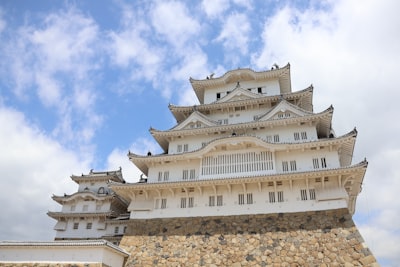 Himeji CastleJapan
Himeji CastleJapan1. Main Building The heart of the Himeji Castle complex is the main keep, a six-story wooden structure with wings that is unique in Japan. As the castle rises, each floor becomes smaller. The top floor features a small shrine with a stunning view of the castle, and is filled with stunning details, such as the fish-shaped roof decorations that are said to be fireproof. 2. Koko-en Garden Next to the castle is Koko-en Garden, a beautiful Japanese garden with a pond, teahouse, and seasonal flowers that provide a peaceful and calm atmosphere. It's the perfect place to take a break from your castle tour. 3. Hishi-mon Gate The first of the castle's 21 remaining gates, Hishi-mon Gate's stone walls showcase the castle's meticulous defensive design. Popular areas near Himeji Castle 1. Shiramidai Park To the southwest of Himeji Castle is Shiramidai Park. The park features two 1.9-meter-tall statues of sea bream that look like a lion's head and a fish's body. They are replicas of the shahi statues on top of the castle. It is a great place to take photos with Himeji Castle in the background. 2. Sannomaru Square Near the main building of Himeji Castle, Sannomaru Square is a grassy area surrounded by cherry trees. In early April, the cherry blossoms are in full bloom and are beautiful. This is a great place to take beautiful photos of Himeji Castle, especially when the cherry blossoms are in full bloom. 3. Shirotopia Memorial Park To the north of the castle, Shirotopia Memorial Park is a peaceful place for visitors to relax with lush greenery and winding trails. Flowers bloom here all year round, which makes the scenery on the north side of the castle more colorful.
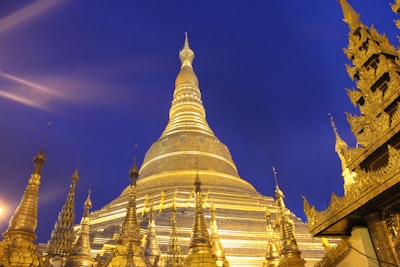 Shwedagon PagodaMyanmar
Shwedagon PagodaMyanmarA trip to Myanmar would not be complete without visiting the 2,500-year-old Shwedagon Pagoda, which houses the Buddha's hair and other sacred relics. Located on the west side of Yangon's Royal Lake, the Shwedagon Pagoda covers an area of 114 acres and is the most sacred and impressive Buddhist sanctuary for the people of the Union of Myanmar. Originally only 8.2 meters high, the pagoda now stands nearly 110 meters high. Hundreds of gold plates are affixed to the surface of the pagoda, and the top of the pagoda is inlaid with 4,531 diamonds, the largest of which weighs 72 carats. This is undoubtedly one of the wonders of the religious world. The Shwedagon Pagoda is a treasure trove of Myanmar's finest heritage - architecture, sculpture and art. The Shwedagon Pagoda is composed of hundreds of colorful temples, pagodas and statues, reflecting nearly 2,500 years of construction. To understand this monumental masterpiece of art and architecture, visitors will experience the magnificent symbol of Buddhism in the lives of the Burmese people from an insider's perspective. The Shwedagon Pagoda is a center of religious and community activities - bustling with believers and monks washing statues, offering flowers, worshiping and meditating.
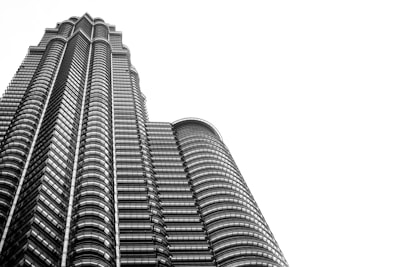 Petronas TowersMalaysia
Petronas TowersMalaysiaOn April 15, 1998, the Council on Tall Buildings named the Petronas Twin Towers the world's tallest buildings, bringing that honor to a new continent. The project's developers—a consortium of private investors in partnership with the Malaysian government and national oil company Petronas—did not initially plan to surpass Chicago's Sears Tower, but they did aspire to create a monument that would celebrate Kuala Lumpur's pre-eminence as a commercial and cultural capital. American architect Cesar Pelli's design—elegantly proportioned twin towers with a slenderness ratio (height to width) of 9.4—not only earned the title of the world's tallest building, it also captured the public's imagination. Pelli's design responded to the developers' call to represent "Malaysia's culture and traditions" by evoking Islamic arabesques and using repetitive geometric patterns characteristic of Muslim architecture. In plan, the eight-pointed star composed of intersecting squares is a clear reference to Islamic design; curved and pointed bay windows create a scalloped facade reminiscent of a temple tower. The two identical towers are connected by a 41-story bridge, forming a dramatic gateway to the city. The structure is made of high-strength concrete, a material familiar to Asian contractors that provides twice the sway reduction of steel. Supported by a 75-foot-by-75-foot concrete core and widely spaced supercolumns on the outer ring, the towers exhibit a sophisticated structural system that fits their slender profile, providing 14,000 to 22,000 square feet of column-free office space per floor. Other features include glass curtain walls and stainless steel sunshades to diffuse the strong equatorial light; a double-deck elevator system with a sky lobby transfer point on the 41st floor to accommodate the thousands of people who use the complex every day; and a mixed-use base with a concert hall and shopping mall surrounded by nearly 70 acres of public parks and plazas. The Twin Towers successfully represent Malaysia's past and future in both engineering and design, celebrating the country's traditions while also announcing the country's modernization. The result, Perry said, is a monument that is not unique to Malaysia, but will forever be associated with Kuala Lumpur.
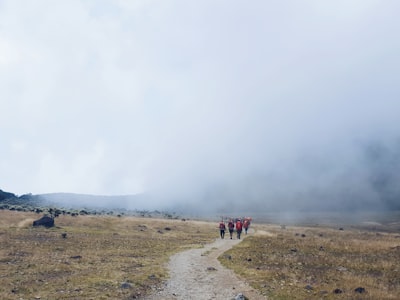 BorobudurIndonesia
BorobudurIndonesiaBorobudur is a magnificent Buddhist temple complex in Central Java, Indonesia. It is the largest Buddhist temple in the world and one of the most impressive archaeological sites in Southeast Asia. The temple contains over 2,600 relief panels and 72 stupas, each of which houses a Buddha statue. Visitors can climb to the top of the temple for stunning views of the surrounding volcanic landscape. The overall design of Borobudur is a stepped pyramid with a base measuring 123 meters by 123 meters. The shape of the steps or platforms is not a perfect square due to the many depressions on each of the four corners. The monument is 35 meters high at its highest point, measured from the ground to the top of the uppermost central stupa. The monument faces northeast on all four sides, and there are four staircases leading to the top of the monument, located in the center of each side of the monument. Each staircase leads to the upper level of the monument through several ornate arches. The main entrance is on the east side of the monument, and almost all tourists enter from here. To reach the entrance, you must first ascend the main staircase from the plain below to the top of the hill on which Borobudur stands. The monument is divided into 9 different platforms, the first 6 of which are square and the upper 3 are circular. The monument is also conceptually divided into three broader levels, corresponding to the three "realms" in Buddhist cosmology. The base level (first level) represents the desire realm (kamadhatu). Levels 2 to 6 of the monument represent the form realm (rupadhatu). The upper levels 7 to 9 represent the formless realm (arupadhatu). Each level of the monument represents a stage of enlightenment. As pilgrims circumambulate the monument and climb the levels, they are required to interpret and contemplate the life philosophies and teachings contained in the wall carvings (bas-reliefs) that lead them on a symbolic journey through the different stages of enlightenment. Level 1: The Base Shell (Kamadhatu) The first level or base is actually made up of two levels. The lower base is only a few feet wide. The upper base is a wider platform, about 7 meters wide, that allows people to walk around the monument. The entire base actually wraps around the original "foot" of the monument, hiding it (see the photo above). This base appears to have been added after the monument was built, but the reason for this addition remains a mystery. The hidden foot is known because it was discovered by accident in 1885. It contains more than 160 relief panels, as well as a number of inscriptions that provided guidance to the sculptors. Today, only the southeast corner of the hidden foot is open to visitors. The lower level conceptually represents the world of desire, or the lowest level of existence, and the world from which humans are born. This world is associated with suffering and egoic traits such as greed, dishonesty, and envy. Levels 2-6: The Realm of Form (Rupadhatu) The next five levels consist of 5 square platforms that decrease in size and height as you move upward. Of these five levels, the first four confine visitors to narrow "corridors" or platforms that surround the four levels of the monument. The galleries are only about 6 to 7 feet (1.8 to 2.2 meters) wide, and each section is short due to the concave square shape of the monument, so visitors cannot see very far. The galleries are designed to be walked in a clockwise direction. If you were to walk around all four galleries, the total distance would be 1.2 kilometers. However, due to the pyramidal shape of the monument, all galleries are not the same length. The breakdown of gallery lengths is as follows: 2nd floor: 360 meters 3rd floor: 320 meters 4th floor: 288 meters 5th floor: 256 meters Each of the five levels of the color realm (including the four terraces and the sixth floor) has a railing. When walking along the terraces, the railings are very high, blocking the view of the surroundings and making people feel cramped. The niches on the outside of the railings house seated Buddhas, many of which are badly damaged and partially exposed. On the inner and outer sides of the railings and on the facades of the platforms, you will see rows of bas-relief panels; these artistic wall carvings were created by skilled sculptors. There are more than 2,400 bas-relief panels spread across the various levels of the monument. The five intermediate levels represent the world of forms, a higher level of consciousness in which beings are more detached from the world, no longer subject to desires, nor to extremes of pleasure or pain. Levels 7-9: Arupadhatu The upper three levels have 72 small stupas arranged in concentric circles around the central large stupa. The lowest circular platform has the largest diameter and has 32 stupas, the next level up has 24, and the topmost platform has only 16 stupas. Of all the 72 stupas that should have been there, one or two have been badly damaged, revealing the Buddha statues that were originally located within them, which, incidentally, also provides opportunities for some amazing photographs. The remaining stupas are well preserved and have decorative holes. The holes in the lower and middle circular stupas are diamond-shaped, while the holes in the topmost stupa are square. Indonesians are very superstitious and believe that if a person enters a stupa and touches the Buddha statue inside, good luck will come to them. The main stupa is located on the ninth and highest level of the site and is about 16 meters in diameter. The existing stupa's spire is missing and its shape is unknown. During the first restoration project led by Van Erp, the spire was rebuilt as a three-story stone umbrella called a "chattra", but it was later removed due to insufficient original stone required for reconstruction. The "chattra" is now stored in the Karmawibhannga museum near the monument. The stupa is said to have two hollow chambers inside that are not connected to each other. During the restoration process, the team opened the stupa and reportedly found an unfinished Buddha statue inside, which is in the bhumiparsa mudra, corresponding to the cardinal direction of the east. As you ascend to the upper level, the view suddenly opens up and the surrounding scenery is unobstructed, which is in stark contrast to the narrow and claustrophobic exhibition halls below. All the clutter and detail on the terrace disappears, revealing a very simple geometric pattern. This dramatic change symbolizes the liberation of the mind as one transitions from the rupadhatu level of enlightenment to the arupadhatu level of enlightenment. Strange Proportions There is an interesting physical ratio between the three "realms" dimensions. If you imagine the bottom level as the "feet", the middle five levels as the "body", and the top three levels as the "head", then the ratios of foot width: head width: body width, and foot height: head height: body height appear to be 4:6:9. This ratio is believed to have some calendrical and astronomical significance.
 Ganges RiverIndia
Ganges RiverIndiaThe Ganges is more than just a river. Rising from glaciers in the Himalayas, this mighty waterway winds through thousands of miles of countryside before emptying into the Bay of Bengal, and is a lifeline for millions of people. The world’s third-largest river, the Ganges is also considered sacred by Hindus: it’s a goddess. From Varanasi to Kolkata, the Ganges is also a scene of color, life, and drama, with religious ceremonies, quiet fishing boats, and pleasure boats. Cruising the Ganges is one way to explore the essence of Indian life—and now, travelers have more options than ever before to get up close and personal with this mighty river. Here are five great ways to explore the Ganges on your next whirlwind trip to the subcontinent. Dawn Boat Ride in Varanasi The bustle of Varanasi and its bustling ghats is a whirlwind for the senses most of the time. But if you want a more tranquil view of one of the world’s oldest cities, take a dawn boat ride on the Ganges to watch the sunrise. On the water, you can admire the morning mist, admire the devout pilgrims on the riverbank, listen to the city's rising hustle and bustle, and the tranquil scene before the ghats fill up with color and noise. Hikes in Rishikesh In Rishikesh, the Ganges River is closer to its source: pristine glaciers, raging rapids, and surrounded by beautiful forests and peaks. An adventurous journey is essential to fully explore this magical North Indian destination. Along the way, you can visit the many shrines near the river and the sadhus who frequent them. To round off your trip to Rishikesh, you can even go on a whitewater rafting trip and zip through the rapids of the river. Ganga Aarti While the sunrise in Varanasi is breathtaking, the scenery around the Ganges at sunset presents a completely different scene. As night falls, the Ganga Aarti ceremony begins: a religious ceremony that attracts pilgrims as well as tourists, during which people offer fire sacrifices to the goddess Ganga. It’s an absolute feast to behold – and if you venture further afield, note that similar ceremonies take place in Haridwar and Rishikesh. Brijrama Palace Sometimes it’s worth taking a step back to get the best views of the Ganges. In the heart of Varanasi, Brijrama Palace offers a luxurious retreat with stunning river views (and, since it overlooks Darbanga Ghat, a great spot for leisurely sightseeing). In addition to its open-air terrace restaurant, Brijrama Palace also offers private boat dining experiences if you’re craving a gourmet meal on your Ganges cruise. Ganga Voyager For a particularly elegant way to cruise the Ganges, it’s hard to find a better place than the Ganga Voyager, a luxury ship that takes visitors from Kolkata to destinations across the country on multi-day itineraries. Along the way, you'll enjoy numerous fascinating stops and have the opportunity to explore riverside landmarks and communities.
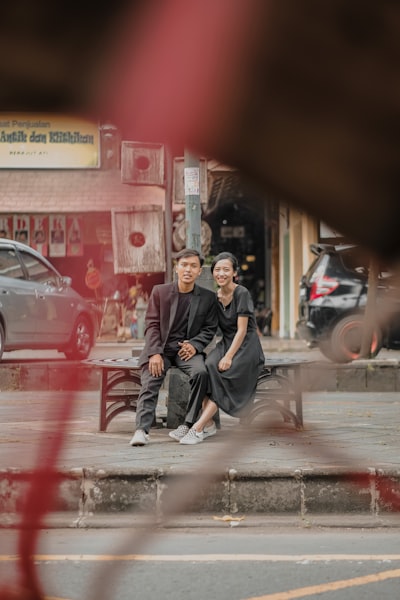 Komodo National ParkIndonesia
Komodo National ParkIndonesiaKomodo Island This is one of the two islands that the Komodo dragons inhabit and is the largest island in Komodo National Park. It is also the only inhabited island in Komodo National Park and is home to the Komodo Village and the indigenous Atamodo tribe. Here you will hike with a local guide (usually from the indigenous Atamodo tribe!) and try to spot wild Komodo dragons. Tip: Usually boat tours go to Komodo Island or Rinca Island to see the Komodo dragons. But on Komodo Island, it is more difficult to spot them because the island is larger and wilder. Rinca Island Rinca Island is home to over 1,000 Komodo dragons and is the only island other than Komodo Island where you can find them. Although it is not as famous as Komodo Island, it is actually easier to spot Komodo dragons here because it is a smaller island but has a larger population of dragons! Tip: The trees on Rinca Island are a little more neatly trimmed, there is a boardwalk, and it is easier to see. If you want a wilder experience, head to Komodo Island. Padar Island This is the most iconic viewpoint in Komodo National Park and the one you’ll probably see in photos everywhere. Here you’ll take an easy 45-minute hike to the top of the mountain to get a panoramic view of Komodo National Park. If you look closely at the photos, you’ll see a pink beach, a black beach, and a white beach! Tip: If you take a night boat trip, come here to catch the sunrise when there are fewer people. Pink Beach There are several pink beaches in Komodo National Park. The pink beach where most boats stop is the one near Komodo Island, which has faded slightly in recent times due to tourists taking red coral (the coral that gives the sand its color) home. To see the pinkest part of the beach, head to the far end of the beach where tourists rarely go, where the sand is a darker pink. Tip: If you’re on a private boat, or if the current allows, head to the pinkest (and more remote) pink beach, Short Beach, near Padar Island. Don’t forget to leave the red coral. Manta Point Here you can snorkel with giant manta rays! The water is cooler here, which is exactly what the gentle manta rays like. During manta season, you can swim with many of them. Tip: The best time to see them is actually during the rainy season, from December to March, when the water temperature is particularly low, but you can still see them until June. If you come from July to September, the chances of seeing them will be less. Siaba Bay A.k.a. Turtle Bay, Siaba Bay has beautiful coral reefs and giant turtles love to live here because of their favorite food (seaweed!). Siaba Bay is one of our favorite spots in Komodo - you can snorkel and dive here to see those fascinating and beautiful turtles. Tip: Not all tours go to Siaba Bay, so if you really like turtles and want to come here, double check the itinerary or take a private boat tour so you can customize your own itinerary. Kalong Island This was the highlight of our trip to Komodo National Park! Here you'll see millions of bats migrating at sunset, a sight that's truly out of this world. At first, you'll see only a few bats flying out, but soon the entire orange sky is covered in bats. Tip: Not all boat trips go to Kalong Island. 3D2N trips are available, but 1-day speedboat tours and diving trips are not. Kalong Island alone is worth 3D2N trips or private speedboat trips!
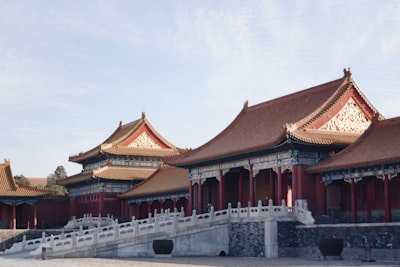 Forbidden CityChina
Forbidden CityChinaThe Forbidden City is a magnificent palace complex located in the heart of Beijing, China. It was the imperial palace of the Ming and Qing dynasties and is now a UNESCO World Heritage Site. Visitors can explore the magnificent architecture, exquisite details and rich history of this iconic building. How to visit the Forbidden City? Entry and exit: The Forbidden City only allows one-way traffic from north to south, and visitors can only enter from the Meridian Gate in the south and leave from the Shenwu Gate or Donghua Gate in the north. Time plan: It is recommended to take two to four hours to visit the main palaces on the central axis; if you are interested in exploring the west and east wings, you will need a full day for a thorough visit. Classic tour route of the central axis: Meridian Gate → Taihe Gate → Taihe Hall → Zhonghe Hall → Baohe Hall → Qianqing Gate → Qianqing Palace → Jiaotai Hall → Kunning Palace → Imperial Garden → Shenwu Gate What are the must-see attractions in the Forbidden City? Taihe Hall: The largest and most important hall, used for grand ceremonies such as coronations. Hall of Central Harmony: The emperor's waiting room before ceremonies. Hall of Preserving Harmony: The venue for state banquets and receptions. Palace of Heavenly Purity: The emperor's living quarters. Imperial Garden: A tranquil oasis that offers a glimpse into the emperor's leisure space. What hidden areas in the Forbidden City are easy for tourists to overlook? Treasure House: Although a separate ticket is required, this gallery displays fascinating royal artifacts. Clock and Watch House: Explore this unique building, which displays timekeeping instruments from various eras. Nine Dragon Wall: A gorgeous glazed wall behind the Hall of Supreme Harmony, with exquisite dragon patterns painted on it. Corner Tower: A symbolic tower located in the corner of the main hall. Are there any other attractions worth visiting near the Forbidden City? Tiananmen Square and Jingshan Park near the Forbidden City are usually visited together with the Forbidden City, which usually takes about half a day. Tiananmen Square is the center of Beijing City and the largest central square in the world. It is located near the entrance of the Forbidden City (Wumen) and is usually visited before entering the Forbidden City. After visiting the Forbidden City, exit the Shenwu Gate and head to Jingshan Park for a stunning panoramic view of the Forbidden City and other attractions on Beijing's central axis. There is only one road between the Forbidden City and Jingshan Park.
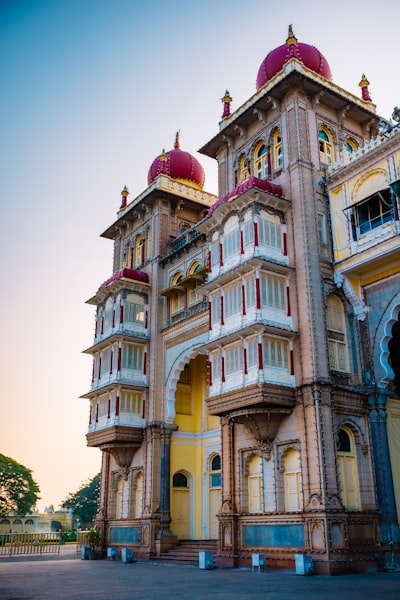 Taj MahalIndia
Taj MahalIndiaThe Taj Mahal is an outstanding example of Mughal architecture, a fusion of Persian, Islamic and Indian styles. It is known for its perfect blend of various architectural elements such as domes, arches, minarets and exquisite decorations. The entire complex, including the gardens, reflecting pools and the main mausoleum, is arranged symmetrically along a central axis, creating a breathtaking visual effect. One of the most striking features of the Taj Mahal is its central dome, a huge white marble structure topped by a spire called the Kalash. This dome symbolizes the vault of heaven and represents a heavenly abode. The four minarets standing at the corners of the Taj Mahal not only serve a decorative purpose, but also play the function of supporting and stabilizing the main structure, especially during earthquakes. In addition, they add elegance and verticality to the building. The Taj Mahal is decorated with intricate calligraphy and ornamentation, and beautiful verses from the Quran are engraved on the entrance arch and throughout the complex. The beauty of the marble surface is further enhanced by floral and geometric patterns and elaborate inlay work using semi-precious stones, adding intricate details to the overall splendor of the monument. The south side of the mausoleum is the main entrance to the interior: a tall octagonal room whose interior emits a strange echo and a pale glow. A marble screen decorated with precious gems, cut so finely that it is almost translucent, protects the cenotaph of Mumtaz Mahal in the center. It aligns perfectly with the doorway to Chowk-i-Jilo Khana and the passage beyond, and Shah Jahan's door is squeezed next to it - the only object that breaks the perfect symmetry of the entire complex. The inlay work on the marble tomb is the finest in Agra, and no effort was spared to make it perfect - some petals and leaves are composed of as many as sixty separate stone fragments. The top of Mumtaz Mahal's tomb is inscribed with the ninety-nine names of Allah, and Shah Jahan's tomb contains a pen case, the symbol of a male ruler. In accordance with Mughal tradition, these monuments are merely representations of the real coffins, which lie in the same position in the tomb below. The Taj Mahal complex is divided into the following sections. Visit Chowk-i-Jilo Khana The south, east, and west entrances all lead to the forecourt of Chowk-i-Jilo Khana. The main entrance to the complex, an arched gateway topped with an elaborate dome decorated with Quranic verses and inlaid floral patterns, is located on the north side of Jilo Khana Square, aligned with the Taj Mahal but obstructing the view of those waiting outside. Inspect the charbagh After passing through the gates of Chowk-i-Jilo Khana, you'll see the Taj Mahal itself at the end of a massive charbagh (literally "four gardens"). It is divided into four quadrants by waterways (usually dry), reminiscent of the Quranic description of paradise, where rivers flow with water, milk, wine, and honey. Introduced from Central Asia by Babur, the Shahbagh remained popular throughout the Mughal era. Unlike other Mughal mausoleums, such as Akbar's and Humayun's, the Taj Mahal is not located in the center of the mausoleum, but at the northern end, presumably to take advantage of its riverside location. Taj Mahal At the far end of the mausoleum, steps lead up to the high square marble platform on which the mausoleum stands, with a tall conical minaret at each corner. To the west of the mausoleum is a domed red sandstone mosque, and to the east is a replica Jawab, placed there to complete the architectural symmetry of the complex - it cannot be used as a mosque as it faces away from Mecca. The Taj Mahal is essentially square, with pointed arches on the sides and topped by a massive central dome that stands more than 55 meters tall, its height accentuated by a nearly 17-meter-high brass spire on top. The mausoleum appears larger and more imposing as you approach, but only up close can you appreciate its enormous scale and the exquisite detail of the relief carvings, especially the floral patterns in the gemstones. The edges of the arches are inscribed with Arabic verses praising the glory of heaven, which are so proportioned that each letter appears to be the same size when viewed from the ground. Visit the Museum The Taj Mahal Museum, located on the western wall of the enclosure, houses exquisite miniature paintings, two marble columns based on letters from the fort, and portraits of Mughal rulers such as Shah Jahan and Mumtaz Mahal. Also interesting are the architectural drawings and examples of gem-setting craftsmanship of the Taj Mahal.
Must-See Attractions
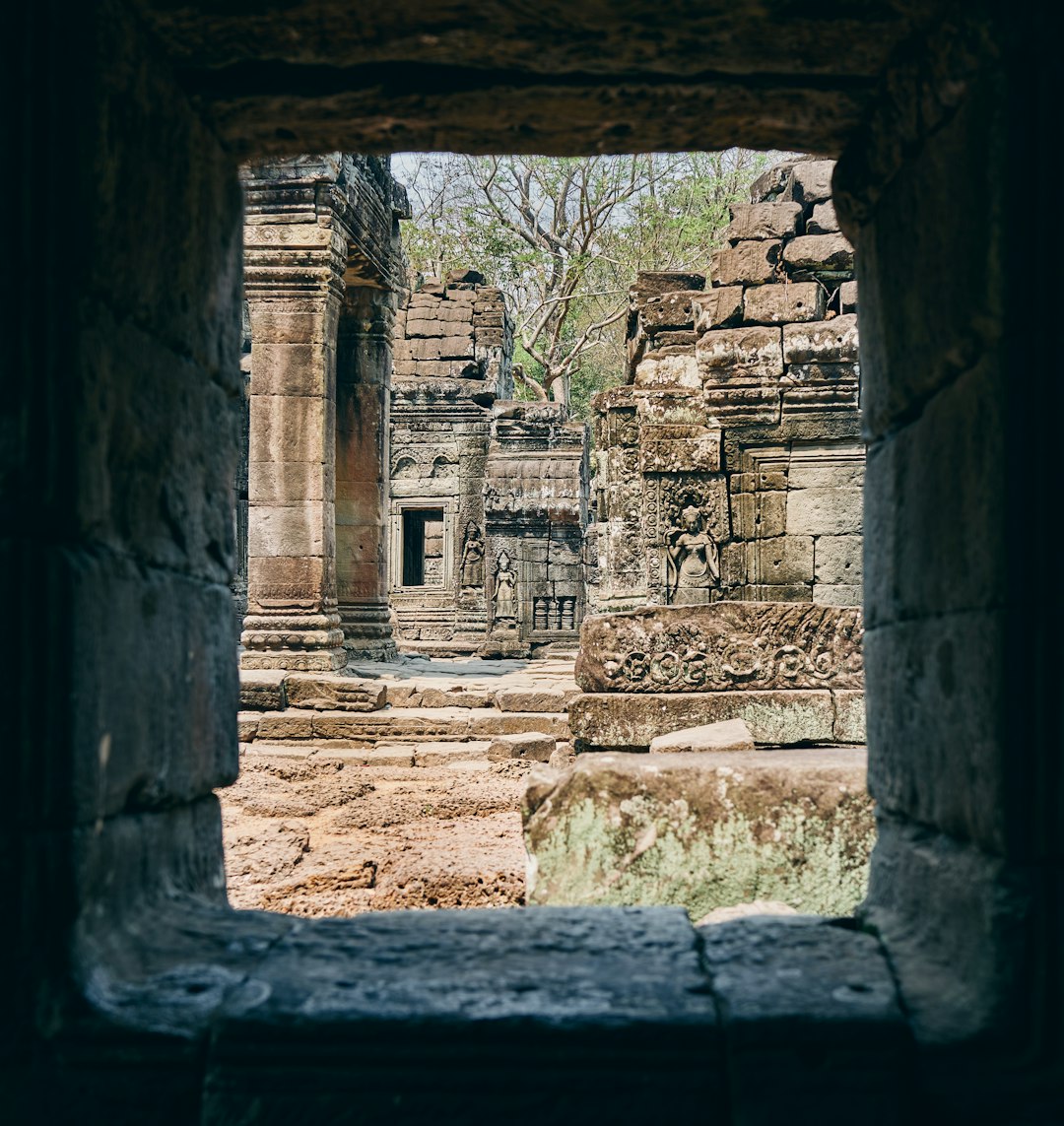
Angkor Wat is the main attraction, a massive temple complex and the largest religious monument in the world. Other must-see attractions include Bayon, Ta Prohm, and the Angkor Thom complex. There are about 50 temples in Angkor Wat, but few people try to visit them all. Since some temples are in poor condition and others are similar in design, it is not necessary to visit all of them. Here are my recommendations for the must-see temples in Angkor Wat. Angkor Wat This is no surprise. The biggest purpose of visiting Angkor Wat is of course to visit the main temple. Built in the 12th century and rediscovered in 1860, Angkor Wat is the largest religious building on earth. It is the symbol of Cambodia and perhaps the most recognizable monument in Asia. Angkor Thom Angkor Thom is the second most famous attraction in the Angkor Wat complex, and it is more than just a Khmer temple. Angkor Thom is an entire city with its own temples, gates, terraces, streets, and more! It was the last great capital of the Khmer Empire and was magnificent. If there is only one place to visit in Angkor Thom, it must be the main temple in the city, Bayon. Decorated with 54 giant smiling faces, this temple is one of the most fascinating places on earth. Ta Prohm Temple Ta Prohm Temple is the last of the three major temples and is known as the "Tomb Raider Temple". After the release of Angelina Jolie's movie, Ta Prohm Temple became famous overnight and is now one of the most popular attractions in Cambodia. However, Ta Prohm Temple's charm has nothing to do with movies. After the temple was abandoned around the 15th century, the jungle quickly swallowed it up. Kapok trees and strangler fig trees turned the ruins into a new home, forming a beautiful picture of harmony between nature and humans. Preah Khan Temple A magnificent temple that once housed 100,000 people, Preah Khan Temple is one of the most underrated highlights of the entire complex. Many tourists who visit Angkor Wat and ignore it are common mistakes, and I believe you will not be one of them. It is divided into four areas, each of which is covered with exquisite bas-reliefs. To get there, you need to cross a famous moat bridge that depicts a battle between the mythical Garuda and the Naga king. Banteay Srei The “Palace Citadel” is another hidden gem of Angkor Wat. This labyrinthine palace is filled with bas-reliefs depicting mythical beasts and legends. It is not located on the main route of the tour, so unlike other temples, you don’t have to compete with the hustle and bustle of tourists to enjoy this temple.
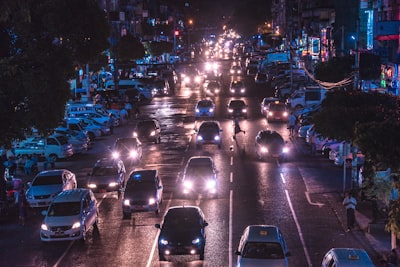 BaganMyanmar
BaganMyanmar BaliIndonesia
BaliIndonesiaBali is renowned for its stunning natural beauty, with lush tropical landscapes, pristine beaches, and iconic rice terraces. Some must-see attractions include the Tegalalang Rice Terraces, the sacred Uluwatu Temple, the Campuhan Ridge Walk, and the vibrant Ubud art and cultural center.
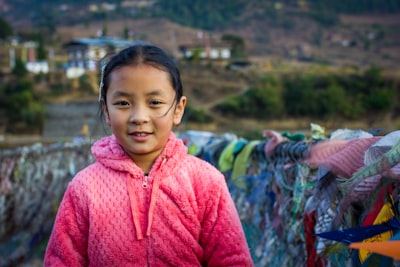 BhutanBhutan
BhutanBhutan1. Paro After hurtling up steep hills, travelers finally touch down at Paro International Airport, the gateway to the “Land of the Thunder Dragon.” Less than 10 minutes from the airport is the historic riverside town of Paro, known for its National Museum, the majestic Paro Dzong, and the iconic Tiger’s Nest Monastery, a 6.4-kilometer (4-mile) walk away. Paro town is a must-see and a must-see. Take some time to wander the streets and browse the Paro Weekend Market, perusing the shops and stalls selling Himalayan honey and handmade souvenirs. When you’ve worked up an appetite, stop by one of the many restaurants for a drink—we recommend Momo Corner, which serves fresh, handmade momo dumplings. Planning tip: Paro is home to Bhutan’s only international airport and is often the first or last stop on a visitor’s itinerary. Whether you’re new to the country or near the end of your trip, rent a car and hire a guide to explore the historical and religious sites around the Paro Valley. 2. Thimphu Bhutan’s capital city is a perfect blend of rich culture and cosmopolitan vibes. Spend a day making your own stamp at the Bhutan Postal Museum, tour the magnificent Tashi Cho Dzong, circumambulate the National Memorial Stupa, and watch the immaculately dressed police manually direct traffic (there are no traffic lights in the country). When the sun goes down, enjoy the nightlife at bars and clubs like Mojo Park and Grey Area, a popular art bar with live music, where you can chat with locals and drink a bottle or two of Bhutanese Red Panda beer or a glass of Ala (a spirit distilled from rice). Planning tip: Be sure to take a walk in the hills surrounding the capital. For an easy experience, a flat and beautiful trail runs along the west side of the valley, connecting the BSS communications tower and Wangditse Goemba. 3. Punakha One of Bhutan’s most beautiful places, Punakha is surrounded by rustic riverside farms, cattle grazing in rice and pepper fields, and home to the country’s most spectacular dzong (monastery fortress), majestically situated beside the sacred confluence of two rivers. Life in Punakha revolves around the rivers that meet at its center. For the best river views, take a short walk from Punakha Dzong to one of the country’s largest suspension bridges, draped with fluttering prayer flags. Visitors can also try whitewater rafting on the Po and Mo rivers. Planning Tip: Punakha’s lower elevation (1,242 meters/4,075 feet) means temperatures here tend to be higher than in nearby towns and areas—you’ll need to wear fewer layers and more sunscreen. 4. Khoma Best for Exploring Traditional Textiles Adventurous travelers can get a peek behind the secrets—or rather, shawls—of Khoma, Bhutan’s textile capital. Located in Lhuentse County in eastern Bhutan, Homa is a village of about 100 residents, but not a single car. Local artisans spend their days weaving ornate patterns and traditional Buddhist motifs on wooden looms, using dyes from locally sourced minerals and plants. 5. Phubujikha Valley Best for Outdoor Activities and Birdwatching Drive through mountain meadows dotted with yaks to reach one of Bhutan’s most sacred places. The Phubujikha Valley and its main attraction, Gangte Goemba, exude tranquility and peace. Gangte Goemba is a 17th-century monastery that overlooks the valley’s fertile farmland. It’s also one of the easiest places to spot endangered black-necked cranes. The monastery itself is gorgeous, but it’s Gangte’s natural beauty that’s truly breathtaking. There are numerous hiking trails, many of which are relatively flat, so you can enjoy the views without putting in any effort. Archery, mountain biking, camping, birdwatching and picnicking are other popular activities. Planning Tip: Naturalists should plan to visit between late October and mid-March to see the graceful black-necked cranes that gather here on their migration from Tibet.
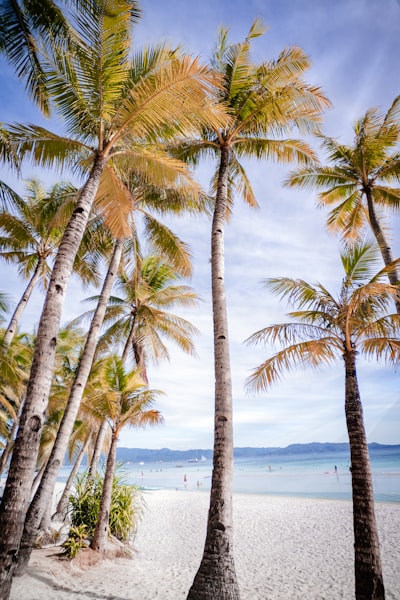 BoracayPhilippines
BoracayPhilippinesBoracay is renowned for its stunning white sand beaches, crystal-clear turquoise waters, and vibrant nightlife. The island's main attraction is the famous White Beach, which stretches for over 4 kilometers and offers a variety of water sports, beach activities, and lively bars and restaurants.
 BorobudurIndonesia
BorobudurIndonesiaBorobudur is a magnificent Buddhist temple complex in Central Java, Indonesia. It is the largest Buddhist temple in the world and one of the most impressive archaeological sites in Southeast Asia. The temple contains over 2,600 relief panels and 72 stupas, each of which houses a Buddha statue. Visitors can climb to the top of the temple for stunning views of the surrounding volcanic landscape. The overall design of Borobudur is a stepped pyramid with a base measuring 123 meters by 123 meters. The shape of the steps or platforms is not a perfect square due to the many depressions on each of the four corners. The monument is 35 meters high at its highest point, measured from the ground to the top of the uppermost central stupa. The monument faces northeast on all four sides, and there are four staircases leading to the top of the monument, located in the center of each side of the monument. Each staircase leads to the upper level of the monument through several ornate arches. The main entrance is on the east side of the monument, and almost all tourists enter from here. To reach the entrance, you must first ascend the main staircase from the plain below to the top of the hill on which Borobudur stands. The monument is divided into 9 different platforms, the first 6 of which are square and the upper 3 are circular. The monument is also conceptually divided into three broader levels, corresponding to the three "realms" in Buddhist cosmology. The base level (first level) represents the desire realm (kamadhatu). Levels 2 to 6 of the monument represent the form realm (rupadhatu). The upper levels 7 to 9 represent the formless realm (arupadhatu). Each level of the monument represents a stage of enlightenment. As pilgrims circumambulate the monument and climb the levels, they are required to interpret and contemplate the life philosophies and teachings contained in the wall carvings (bas-reliefs) that lead them on a symbolic journey through the different stages of enlightenment. Level 1: The Base Shell (Kamadhatu) The first level or base is actually made up of two levels. The lower base is only a few feet wide. The upper base is a wider platform, about 7 meters wide, that allows people to walk around the monument. The entire base actually wraps around the original "foot" of the monument, hiding it (see the photo above). This base appears to have been added after the monument was built, but the reason for this addition remains a mystery. The hidden foot is known because it was discovered by accident in 1885. It contains more than 160 relief panels, as well as a number of inscriptions that provided guidance to the sculptors. Today, only the southeast corner of the hidden foot is open to visitors. The lower level conceptually represents the world of desire, or the lowest level of existence, and the world from which humans are born. This world is associated with suffering and egoic traits such as greed, dishonesty, and envy. Levels 2-6: The Realm of Form (Rupadhatu) The next five levels consist of 5 square platforms that decrease in size and height as you move upward. Of these five levels, the first four confine visitors to narrow "corridors" or platforms that surround the four levels of the monument. The galleries are only about 6 to 7 feet (1.8 to 2.2 meters) wide, and each section is short due to the concave square shape of the monument, so visitors cannot see very far. The galleries are designed to be walked in a clockwise direction. If you were to walk around all four galleries, the total distance would be 1.2 kilometers. However, due to the pyramidal shape of the monument, all galleries are not the same length. The breakdown of gallery lengths is as follows: 2nd floor: 360 meters 3rd floor: 320 meters 4th floor: 288 meters 5th floor: 256 meters Each of the five levels of the color realm (including the four terraces and the sixth floor) has a railing. When walking along the terraces, the railings are very high, blocking the view of the surroundings and making people feel cramped. The niches on the outside of the railings house seated Buddhas, many of which are badly damaged and partially exposed. On the inner and outer sides of the railings and on the facades of the platforms, you will see rows of bas-relief panels; these artistic wall carvings were created by skilled sculptors. There are more than 2,400 bas-relief panels spread across the various levels of the monument. The five intermediate levels represent the world of forms, a higher level of consciousness in which beings are more detached from the world, no longer subject to desires, nor to extremes of pleasure or pain. Levels 7-9: Arupadhatu The upper three levels have 72 small stupas arranged in concentric circles around the central large stupa. The lowest circular platform has the largest diameter and has 32 stupas, the next level up has 24, and the topmost platform has only 16 stupas. Of all the 72 stupas that should have been there, one or two have been badly damaged, revealing the Buddha statues that were originally located within them, which, incidentally, also provides opportunities for some amazing photographs. The remaining stupas are well preserved and have decorative holes. The holes in the lower and middle circular stupas are diamond-shaped, while the holes in the topmost stupa are square. Indonesians are very superstitious and believe that if a person enters a stupa and touches the Buddha statue inside, good luck will come to them. The main stupa is located on the ninth and highest level of the site and is about 16 meters in diameter. The existing stupa's spire is missing and its shape is unknown. During the first restoration project led by Van Erp, the spire was rebuilt as a three-story stone umbrella called a "chattra", but it was later removed due to insufficient original stone required for reconstruction. The "chattra" is now stored in the Karmawibhannga museum near the monument. The stupa is said to have two hollow chambers inside that are not connected to each other. During the restoration process, the team opened the stupa and reportedly found an unfinished Buddha statue inside, which is in the bhumiparsa mudra, corresponding to the cardinal direction of the east. As you ascend to the upper level, the view suddenly opens up and the surrounding scenery is unobstructed, which is in stark contrast to the narrow and claustrophobic exhibition halls below. All the clutter and detail on the terrace disappears, revealing a very simple geometric pattern. This dramatic change symbolizes the liberation of the mind as one transitions from the rupadhatu level of enlightenment to the arupadhatu level of enlightenment. Strange Proportions There is an interesting physical ratio between the three "realms" dimensions. If you imagine the bottom level as the "feet", the middle five levels as the "body", and the top three levels as the "head", then the ratios of foot width: head width: body width, and foot height: head height: body height appear to be 4:6:9. This ratio is believed to have some calendrical and astronomical significance.
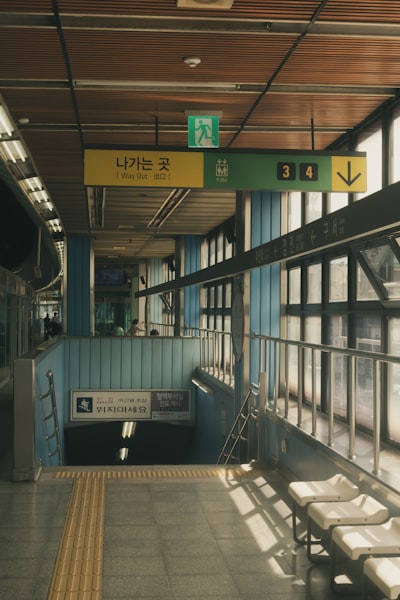 BusanSouth Korea
BusanSouth KoreaBusan is a vibrant coastal city in South Korea, known for its stunning beaches, lively markets, and rich cultural heritage. Some of the must-see attractions include the iconic Haeundae Beach, the bustling Jagalchi Fish Market, the serene Haedong Yonggungsa Temple, and the picturesque Gamcheon Culture Village.
 Chiang MaiThailand
Chiang MaiThailandChiang Mai is known for its stunning temples, including the iconic Wat Phra That Doi Suthep, which offers panoramic views of the city. The Old City is a charming area with well-preserved historic buildings, while the bustling Night Bazaar is a popular spot for shopping and dining. The Elephant Nature Park is a must-visit for animal lovers, where you can interact with rescued elephants in a natural setting.
 Forbidden CityChina
Forbidden CityChinaThe Forbidden City is a magnificent palace complex located in the heart of Beijing, China. It was the imperial palace of the Ming and Qing dynasties and is now a UNESCO World Heritage Site. Visitors can explore the magnificent architecture, exquisite details and rich history of this iconic building. How to visit the Forbidden City? Entry and exit: The Forbidden City only allows one-way traffic from north to south, and visitors can only enter from the Meridian Gate in the south and leave from the Shenwu Gate or Donghua Gate in the north. Time plan: It is recommended to take two to four hours to visit the main palaces on the central axis; if you are interested in exploring the west and east wings, you will need a full day for a thorough visit. Classic tour route of the central axis: Meridian Gate → Taihe Gate → Taihe Hall → Zhonghe Hall → Baohe Hall → Qianqing Gate → Qianqing Palace → Jiaotai Hall → Kunning Palace → Imperial Garden → Shenwu Gate What are the must-see attractions in the Forbidden City? Taihe Hall: The largest and most important hall, used for grand ceremonies such as coronations. Hall of Central Harmony: The emperor's waiting room before ceremonies. Hall of Preserving Harmony: The venue for state banquets and receptions. Palace of Heavenly Purity: The emperor's living quarters. Imperial Garden: A tranquil oasis that offers a glimpse into the emperor's leisure space. What hidden areas in the Forbidden City are easy for tourists to overlook? Treasure House: Although a separate ticket is required, this gallery displays fascinating royal artifacts. Clock and Watch House: Explore this unique building, which displays timekeeping instruments from various eras. Nine Dragon Wall: A gorgeous glazed wall behind the Hall of Supreme Harmony, with exquisite dragon patterns painted on it. Corner Tower: A symbolic tower located in the corner of the main hall. Are there any other attractions worth visiting near the Forbidden City? Tiananmen Square and Jingshan Park near the Forbidden City are usually visited together with the Forbidden City, which usually takes about half a day. Tiananmen Square is the center of Beijing City and the largest central square in the world. It is located near the entrance of the Forbidden City (Wumen) and is usually visited before entering the Forbidden City. After visiting the Forbidden City, exit the Shenwu Gate and head to Jingshan Park for a stunning panoramic view of the Forbidden City and other attractions on Beijing's central axis. There is only one road between the Forbidden City and Jingshan Park.
 Ganges RiverIndia
Ganges RiverIndiaThe Ganges is more than just a river. Rising from glaciers in the Himalayas, this mighty waterway winds through thousands of miles of countryside before emptying into the Bay of Bengal, and is a lifeline for millions of people. The world’s third-largest river, the Ganges is also considered sacred by Hindus: it’s a goddess. From Varanasi to Kolkata, the Ganges is also a scene of color, life, and drama, with religious ceremonies, quiet fishing boats, and pleasure boats. Cruising the Ganges is one way to explore the essence of Indian life—and now, travelers have more options than ever before to get up close and personal with this mighty river. Here are five great ways to explore the Ganges on your next whirlwind trip to the subcontinent. Dawn Boat Ride in Varanasi The bustle of Varanasi and its bustling ghats is a whirlwind for the senses most of the time. But if you want a more tranquil view of one of the world’s oldest cities, take a dawn boat ride on the Ganges to watch the sunrise. On the water, you can admire the morning mist, admire the devout pilgrims on the riverbank, listen to the city's rising hustle and bustle, and the tranquil scene before the ghats fill up with color and noise. Hikes in Rishikesh In Rishikesh, the Ganges River is closer to its source: pristine glaciers, raging rapids, and surrounded by beautiful forests and peaks. An adventurous journey is essential to fully explore this magical North Indian destination. Along the way, you can visit the many shrines near the river and the sadhus who frequent them. To round off your trip to Rishikesh, you can even go on a whitewater rafting trip and zip through the rapids of the river. Ganga Aarti While the sunrise in Varanasi is breathtaking, the scenery around the Ganges at sunset presents a completely different scene. As night falls, the Ganga Aarti ceremony begins: a religious ceremony that attracts pilgrims as well as tourists, during which people offer fire sacrifices to the goddess Ganga. It’s an absolute feast to behold – and if you venture further afield, note that similar ceremonies take place in Haridwar and Rishikesh. Brijrama Palace Sometimes it’s worth taking a step back to get the best views of the Ganges. In the heart of Varanasi, Brijrama Palace offers a luxurious retreat with stunning river views (and, since it overlooks Darbanga Ghat, a great spot for leisurely sightseeing). In addition to its open-air terrace restaurant, Brijrama Palace also offers private boat dining experiences if you’re craving a gourmet meal on your Ganges cruise. Ganga Voyager For a particularly elegant way to cruise the Ganges, it’s hard to find a better place than the Ganga Voyager, a luxury ship that takes visitors from Kolkata to destinations across the country on multi-day itineraries. Along the way, you'll enjoy numerous fascinating stops and have the opportunity to explore riverside landmarks and communities.
Gallery










Discover smart strategies for stress-free travel, from budget-friendly planning to hidden gems. Our insights help you navigate new destinations with confidence and ease, ensuring every trip is a success.

Explore top attractions and must-see landmarks for each location.
Immerse yourself in local traditions and cultural practices.
Discover popular local dishes and dining experiences.
Access practical advice for a smooth and enjoyable journey.
World, One
Journey at a Time
